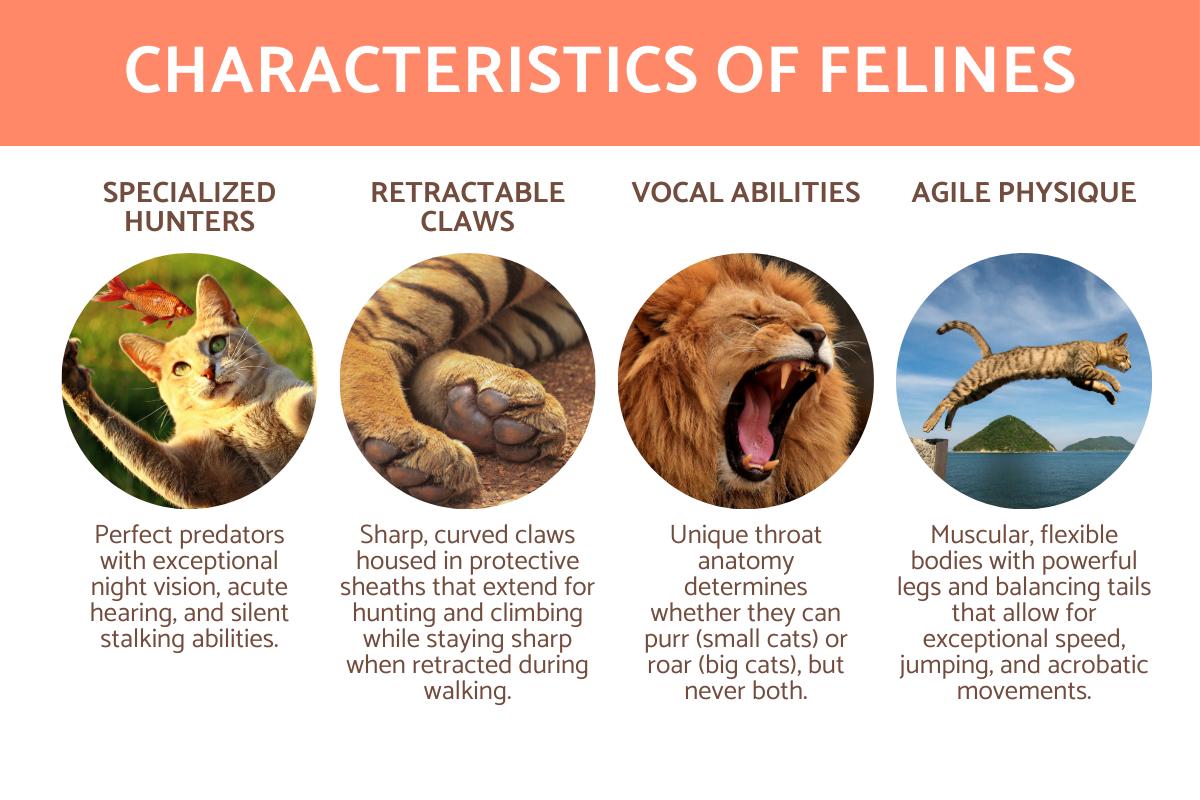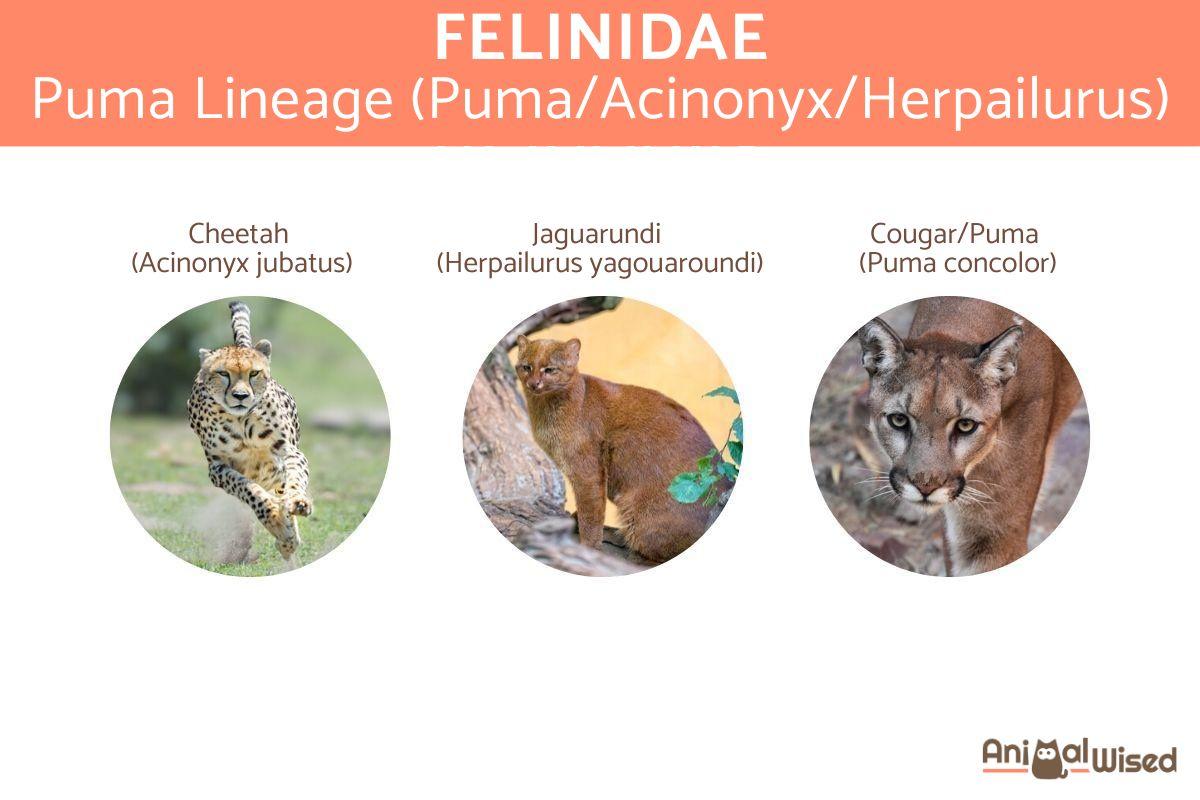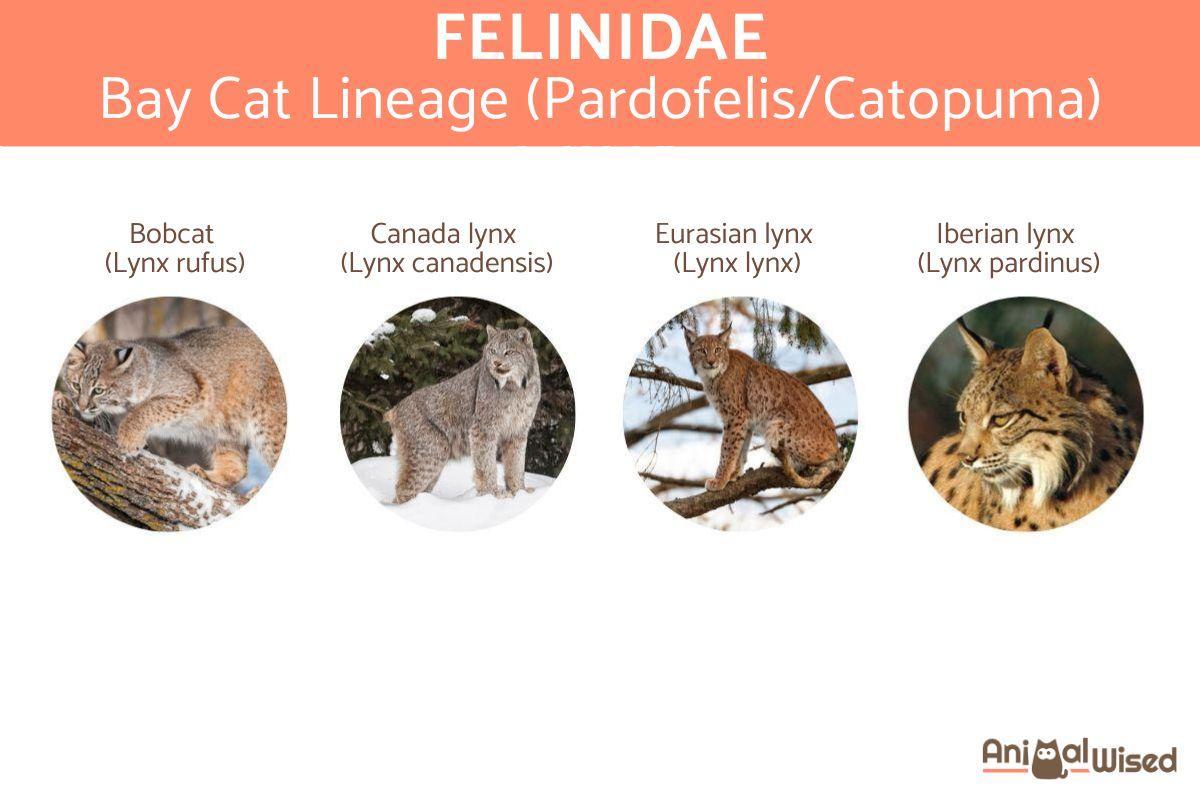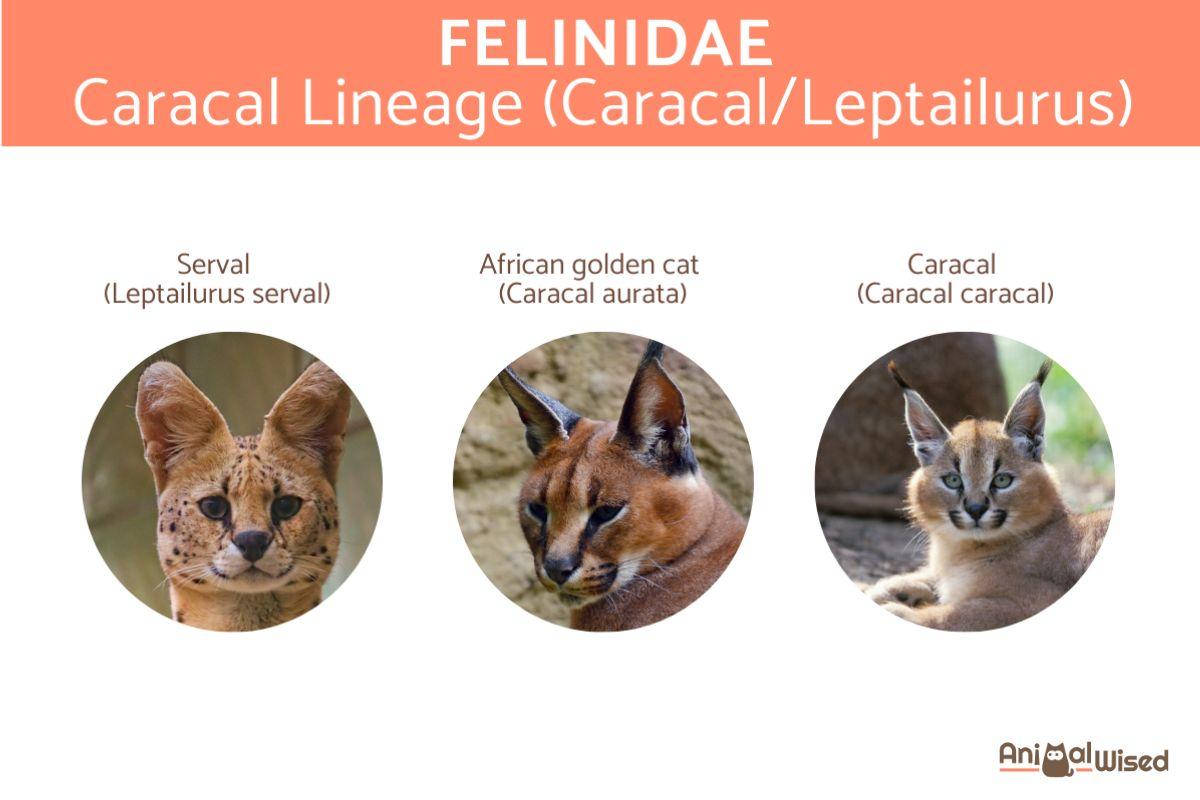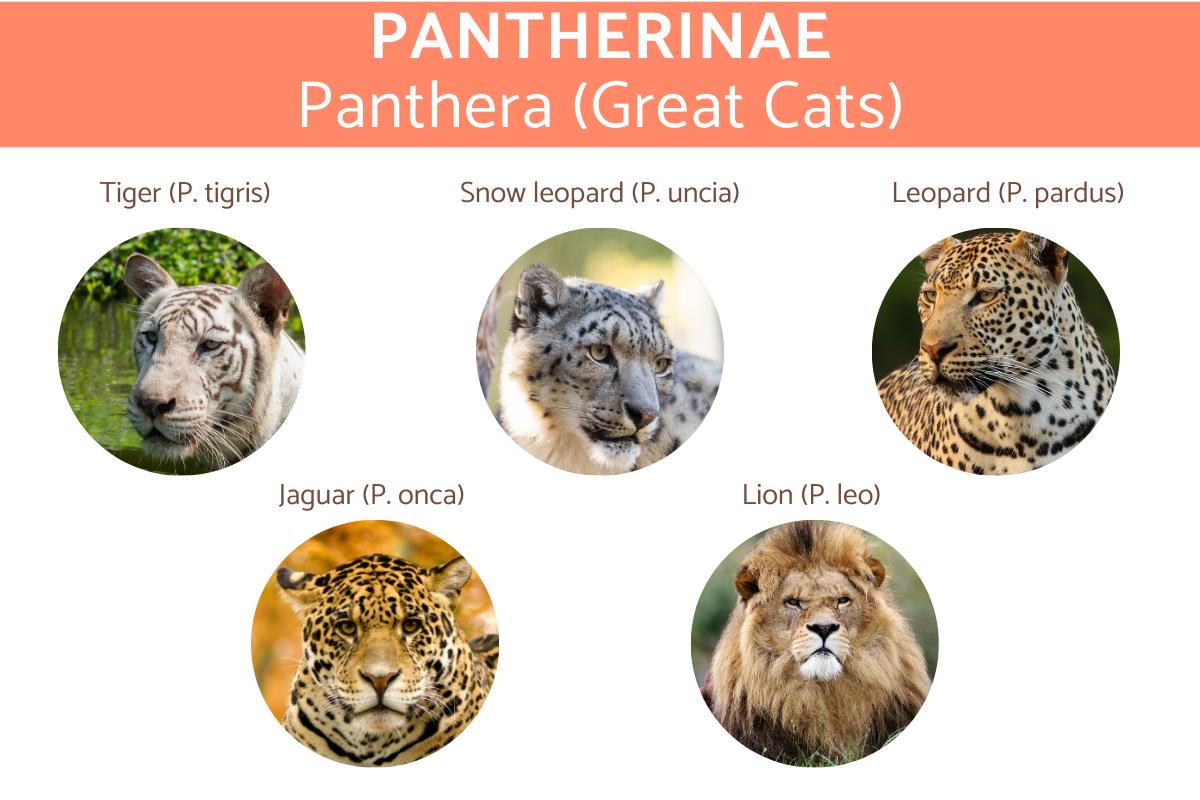Feline Breeds and Types


Felids or commonly felids (Felidae), colloquially called cats, are a family of placental mammals of the order Carnivora. They have slender bodies, keen hearing, short snouts, and excellent eyesight. They are the most secretive of all hunting mammals. Most consume only meat, ignoring any other food as live prey. They catch them with their sharp claws and usually kill them with a single, tough bite.
In the following AnimalWised article, we will explain what the different types of felines are and what their characteristic features are.
Key traits and characteristics of Felines
All felids (Felidae), from the smallest wild cat to the largest tiger, share fundamental characteristics that make them highly successful predators. Here are their key features:
- Specialized hunters: felids are obligate carnivores with exceptional predatory abilities, including superior night vision, acute hearing, and specialized teeth for killing and processing meat. Their short, powerful muzzles house sharp fangs perfectly adapted for delivering fatal bites.
- Retractable claws: most cats possess retractable claws housed in protective sheaths, only extending them for hunting or climbing. This feature keeps their claws sharp and ready for use, with the cheetah being the only exception, having semi-retractable claws adapted for high-speed chases.
- Vocal abilities: their throat anatomy determines their vocal capabilities. This means that smaller cats (Felinae) can purr continuously but not roar, while big cats (Pantherinae) can roar but not purr. This distinction is a key characteristic that separates the two subfamilies.
- Agile physique: all cats share a similar muscular body plan with powerful limbs and a balancing tail, though sizes vary dramatically, from the rusty-spotted cat at 0.9 kg (2 lb.) to the Bengal tiger reaching 260 kg (570 lb.). Their bodies are perfectly designed for stalking, sprinting, and acrobatic movements.

Feline species and types
Currently, there are two subfamilies of felids:
- Felinae: includes small and medium-sized species with a rigid, fully ossified hyoid apparatus, enabling them to purr but not roar. These cats exhibit the most diverse range of coat patterns found among terrestrial carnivores.
- Pantherinae: includes the big cats, characterized by an elastic hyoid apparatus and specialized vocal folds that allow them to roar but prevent continuous purring.
In this article, we will go over all the cat species that belong to these groups.
Types of Felinae
The subfamily Felinae includes 41 species of small to medium-sized cats. The primary distinction between Felinae and Pantherinae lies in their throat anatomy.
Felinae possess a rigid hyoid apparatus (throat bones) and simpler vocal cord structure, which enables them to purr continuously but prevents them from producing the deep roars characteristic of big cats.
Felinae comprises several distinct evolutionary lineages, determined through genetic analysis:
- Domestic Cat Lineage (Felis)
- Leopard Cat Lineage (Prionailurus)
- Puma Lineage (Puma/Acinonyx/Herpailurus)
- Bay Cat Lineage (Pardofelis/Catopuma)
- Lynx Lineage (Lynx)
- Ocelot Lineage (Leopardus)
- Caracal Lineage (Caracal/Leptailurus)
Domestic cat lineage (Felis)
The genus Felis represents one of the most successful and widespread cat lineages, including some of the most familiar cat species. While relatively small in size compared to other felids, these cats are remarkably adaptable and efficient predators.
The genus currently includes five species:
- Domestic cat (Felis catus)
- European wildcat (Felis silvestris)
- Sand cat (Felis margarita)
- Jungle cat (Felis chaus)
- Chinese mountain cat (Felis bieti)
These cats are primarily nocturnal hunters, possessing exceptional night vision with a tapetum lucidum that reflects light through their retinas. Their diet typically consists of small prey including rodents, birds, reptiles, and occasionally insects.
While most Felis species are native to Eurasia and Africa, the domestic cat (F. catus), domesticated from the African wildcat (F. silvestris lybica) approximately 9,000-10,000 years ago, has achieved a worldwide distribution through its association with humans.
If you want to learn more about the different types of domestic cats, continue reading this article, where we describe domestic cat breeds with spots.

Leopard Cat Lineage (Prionailurus)
Prionailurus is a genus of small wild cats native to Asia, representing the Leopard Cat lineage. While most species prefer forested habitats, some have adapted to wetlands and aquatic environments. Their diets vary significantly, including small mammals, reptiles, birds, and in some species, aquatic prey.
These cats are primarily nocturnal, though their size and behavior vary considerably among species. The genus includes both the smallest Asian wild cat (P. rubiginosus), measuring just 35-48 cm (14-19 in) in length - and larger species like the fishing cat (P. viverrinus). The fishing cat is notable for its specialized hunting behavior, being one of the few cats that regularly hunts in water. It inhabits wetlands, rivers, mangroves, and swamps where it catches fish and other aquatic prey.
The genus Prionailurus includes 5 species:
- Rusty-spotted cat (P. rubiginosus)
- Flat-headed cat (P. planiceps)
- Sunda leopard cat (P. javanensis)
- Leopard cat (P. bengalensis)
- Fishing cat (P. viverrinus)
Puma Lineage (Puma/Acinonyx/Herpailurus)
This group includes three genera that share a common ancestor and form one of the major evolutionary lines within Felinae:
- Cheetah (Acinonyx jubatus)
- Jaguarundi (Herpailurus yagouaroundi)
- Cougar/Puma (Puma concolor)
These cats, while diverse in appearance, share some common characteristics. They are generally larger members of Felinae, have relatively long legs, and are notable for their cursorial (running-adapted) hunting styles.
The cheetah is particularly specialized for speed, while the puma and jaguarundi are known for their adaptability across different habitats. If you want to learn more about the cheetahs, continue reading this article, where we describe the differences between a cheetah and a leopard.

Bay Cat Lineage (Pardofelis/Catopuma)
These rare and elusive cats are native to the forests of Southeast Asia.
All three species are poorly studied due to their secretive nature and restricted range. Their varied coat patterns and colors help them blend into their forest habitats.
This lineage includes 3 species:
- Marbled cat (Pardofelis marmorata)
- Bay cat (Catopuma badia)
- Asian golden cat (Catopuma temminckii)

Lynx Lineage (Lynx)
Lynxes (Lynx spp.) are medium-sized cats characterized by their distinctive short tails, long legs, and large ears topped with black tufts. Their facial ruff and relatively compact build are also characteristic features. While some species show spotted patterns, others may have plainer coats.
This genus includes 4 species:
- Bobcat (Lynx rufus)
- Eurasian lynx (Lynx lynx)
- Canada lynx (Lynx canadensis)
- Iberian lynx (Lynx pardinus)
Each species has adapted to hunting different prey, from the snowshoe hare specialists like the Canada lynx to the more generalist diet of the bobcat, though all are skilled predators of medium-sized prey.

Ocelot Lineage (Leopardus)
Leopardus is a genus comprising eight species of small cats native to the Americas. They are distributed throughout South and Central America, with the ocelot and margay extending into southern North America.
These cats show diverse coat patterns, from spots to stripes, typically adapted to their specific habitats. Their size is small to medium, and they have evolved to hunt various prey, from small rodents to arboreal mammals, depending on the species.
The genus includes 8 species:
- Ocelot (L. pardalis)
- Oncilla (L. tigrinus)
- Colocolo (L. colocola)
- Kodkod (L. guigna)
- Margay (L. wiedii)
- Geoffroy's cat (L. geoffroyi)
- Andean mountain cat (L. jacobita)
- Southern tigrine (L. guttulus)

Caracal Lineage (Caracal/Leptailurus)
This group comprises three closely related species that form one of the major evolutionary lines within Felinae:
- Serval (Leptailurus serval)
- African golden cat (Caracal aurata)
- Caracal (Caracal caracal)
These medium-sized cats are predominantly African in distribution, though the caracal also extends into Southwest Asia.
Despite their different appearances, they share several characteristics, including relatively long legs and specialized hunting behaviors. The serval is known for its exceptionally large ears and specialized ability to catch birds, the caracal for its distinctive ear tufts and jumping ability, and the African golden cat for its adaptability to forest habitats.
Have you heard of other big cat hybrids? There are many possible combinations, but they share some common characteristics. Read on in this other article where we talk about the differences between ligers and tigers.

Types of Pantherinae
Pantherinae is a subfamily within Felidae characterized by their specialized vocal anatomy, which in most species enables roaring. Their elastic hyoid apparatus and specialized vocal folds distinguish them from the Felinae subfamily.
Currently, the subfamily includes two genera:
- Neofelis
- Panthera
Neofelis (Clouded Leopards)
The genus Neofelis comprises two species native to South and Southeast Asia.
Though smaller than their Panthera relatives, they are remarkable for their arboreal adaptations. They possess the longest canine teeth relative to skull size of any living cat, and are expert climbers, hunting both in trees for primates and on the ground for other medium-sized prey.
The genus includes 2 species:
- Clouded leopard (Neofelis nebulosa)
- Sunda clouded leopard (Neofelis diardi)

Panthera (Great Cats)
The genus Panthera includes the largest living cats. Their robust bodies, powerful jaws, and strong limbs enable them to take down large prey, from deer and wild boar to occasionally even crocodiles. The tiger (P. tigris) is the largest species, with males reaching up to 260 kg (570 lb).
These cats have a wide distribution across several continents. Tigers inhabit various parts of Asia, lions are found in Africa (with a small population in India), leopards range across Africa and Asia, jaguars dominate the Americas, and snow leopards are adapted to the high mountains of Central Asia, their thick grey-white coat providing excellent camouflage in their snowy habitat.
The genus includes 5 species:
- Tiger (P. tigris)
- Snow leopard (P. uncia)
- Jaguar (P. onca)
- Lion (P. leo)
- Leopard (P. pardus)
All Panthera species are characterized by their robust build, muscular limbs, and strong jaws with specialized dentition for taking down large prey.
If you want to know more about the different subspecies of tigers, do not miss this other article about the different tiger species around the world.

If you want to read similar articles to Feline Breeds and Types, we recommend you visit our Facts about the animal kingdom category.
- Kitchener, AC et al. (2017). A revised taxonomy of the Felidae: The final report of the Cat Classification Task Force of the IUCN Cat Specialist Group. CatNews .
- Christiansen, P., & Harris, JM (2005). Body size of Smilodon (Mammalia: Felidae). Journal of Morphology , 266 (3), 369-384.
- Paijmans, JL et al. (2017). Evolutionary history of saber-toothed cats based on ancient mitogenomics. Current Biology , 27 (21), 3330-3336.
- Hunt Jr, R.M. (1998). Evolution of the aeluroid Carnivora. Diversity of the earliest aeluroids from Eurasia (Quercy, Hsanda-Gol) and the origin of felids. American Museum invites; No. 3252.







